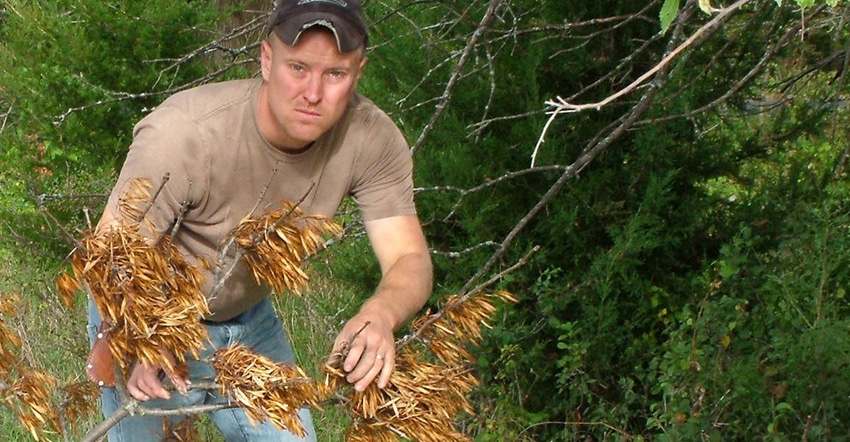April 23, 2018

There are periods of time when Jeffrey Carstens' job at the North Central Region Plant Introduction Station in Ames, Iowa, takes him into the field more than into the office.
As curator for the collection of woody landscape plants, some of Carstens' time is in the woodlands, collecting tree seeds from locations across the U.S. Carstens, who grew up in Randolph, Neb., is particularly interested in collecting ash seeds for the Ash Conservation Project.
An estimated 8 billion ash trees in North America are valued as street and park trees, in windbreaks, for wood products, and in natural forest ecosystems. "In Iowa, there are several communities that have more than 30% of their street and park trees as ash," Carstens says.
With the onslaught of damage from emerald ash borer, we know that our beloved ash trees are under siege. Hearkening back to his days growing up in northeast Nebraska, Carstens knows that a large percentage of windbreak trees on farms, streets and parks in rural communities in his home area will eventually be devastated by EAB. While his work will not thwart the march of EAB, it could help regenerate ashes once EAB has run its course.
"Once science catches up to EAB, there will be a day when we can plant ash trees again," Carstens says. "We will want to select genetics at that time that is best adapted to a geographic region, depending on if you are from Iowa, New York, Pennsylvania or Indiana," he says. "Nurseries often will not know where the ash seed came from, so we might be planting something that is from a totally different climate and environment."
Carstens and his team collect seed from different parts of the country and preserve that seed for the day when the ash woodlands can be regenerated. The lab works to collect, preserve and increase seed, so when quantity and quality are sufficient, ash accessions are freely available to support the scientific research and educational efforts that will be needed to overcome EAB.
"You can relate this to when farmers plant their fields in the spring," he says. "The farmer doesn't just grab any old bag of seed. He has a specific variety in mind that he knows will do well and perhaps has been recommended to him by his seed dealer." Carsten hopes that his work may help tree planters have the same type of knowledge about their seedlings.
The team collects seed from native, high-quality and known-sourced specimens, staying away from human-planted urban stands.
"We want seeds that will be true to type in genetics, so we are taking our time to be selective and get genetics from older and middle-aged trees, as well as young trees," Carstens says. "We want trees from wet soils and dry soils, as well as seeds from trees that have early fall color and some that have late fall color." They collect seeds from trees that have no diseases and some that do, so they are sure they are getting maximum genetic diversity.
"If we collected only from the best, we might be collecting genetics that are useful for this timed era," Carstens says. "But some of the genetics we are collecting might be needed 100 years from now, and there is no way to prophesize what that will be."
While there are no known cultivars resistant to EAB, blue ash has received researchers' attention. Michigan was ground zero for the onslaught of EAB, so the fact that there are stands in that state where the white ash is killed in a short period and the blue ash are still hanging on is encouraging news, Carsten says.
"There is more relative tolerance to EAB in the blue ash compared to all other ash trees in the eastern U.S.," he says.
One result of EAB has been the realization that overplanting certain types of trees can cause long-term problems if a disease or insect pest comes along. "People need to realize that even though you might like a particular species and it may do well right now, you don't want all of your trees planted to a single species," Carstens says. "Issues could arise targeting that single species and causing your area to lose all of its tree canopy."
You May Also Like




